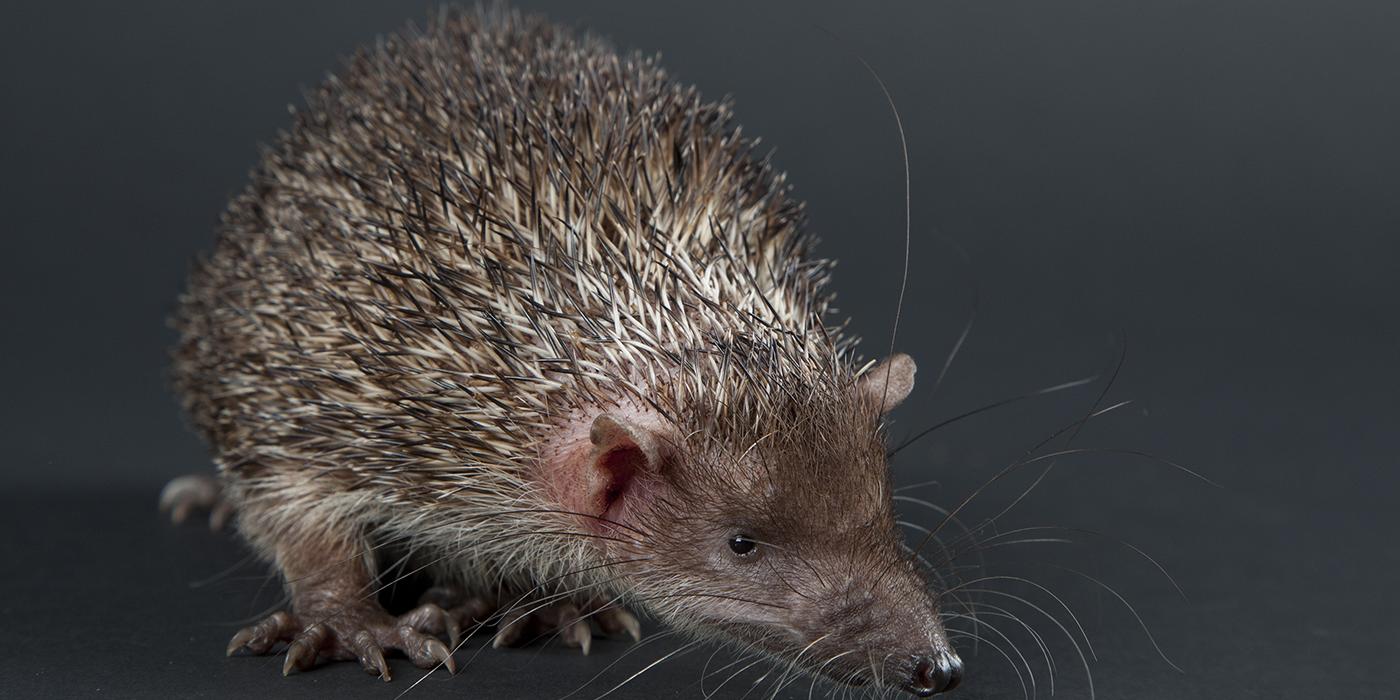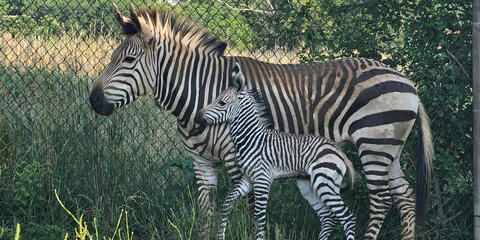Physical Description
Greater Madagascar tenrecs have short, fine spines all over their backs and short muscular tails, with hair on their face, legs, and undersides. Their whiskers are long and patterned, and their eyes are small.
Size
They have a head and body length of 6-9 inches (150-220 millimeters) with a small tail .5 inches (15-16 millimeters) long. They weigh about 6-9 ounces (180-270 grams).
Native Habitat
Greater Madagascar tenrecs are found throughout the island of Madagascar, where they live in dry forests, across farmlands and even in towns and urban areas. They are thought to be adaptable animals, with a relatively stable population.
Lifespan
They can live for up to 8 to 10 years in the wild, and to about 13 years in human care.
Communication
When they're alarmed, tenrecs produce a pusling keen. This sound is barely audible, and is delivered as a chain of pulses at a rate of eight per second.
Food/Eating Habits
Greater Madagascar tenrecs are insectivorous and carnivorous. In the wild they are opportunistic feeders and forage on the ground and in trees for invertebrates. They will also eat some other small animals, such as baby mice.
Sleep Habits
Greater Madagascar tenrecs are primarily active at night. They shelter in tree crevices or small holes in the ground during the day. They can also enter daily and seasonal torpor, or hibernation.
Social Structure
When threatened, they have the ability to roll up completely into a ball, tucking their head and limbs toward their belly.
If a tenrec decides to attack, it does so with its the spines erect, head lowered, and brow spines up and pointed forward, in an attempt to stab the spines into their opponent's body.
Reproduction and Development
Females give birth to litters of two to five babies. Babies are born nearly naked with gray skin and very short white-to-tan bristles on their heads and backs. Babies usually open their eyes when they are between 11 and 13 days old.
Conservation Efforts
Though they are listed as a species of least concern, due to a widespread population across a range of primary and disturbed habitats, greater Madagascar tenrecs do face the threat of overhunting.
Help this Species
- Share the story of this animal with others. Simply raising awareness about this species can contribute to its overall protection.
- Are you a student? Did you love what you learned about this animal? Make it the topic of your next school project, or start a conservation club at your school. You'll learn even more and share the importance of saving species with classmates and teachers, too.




